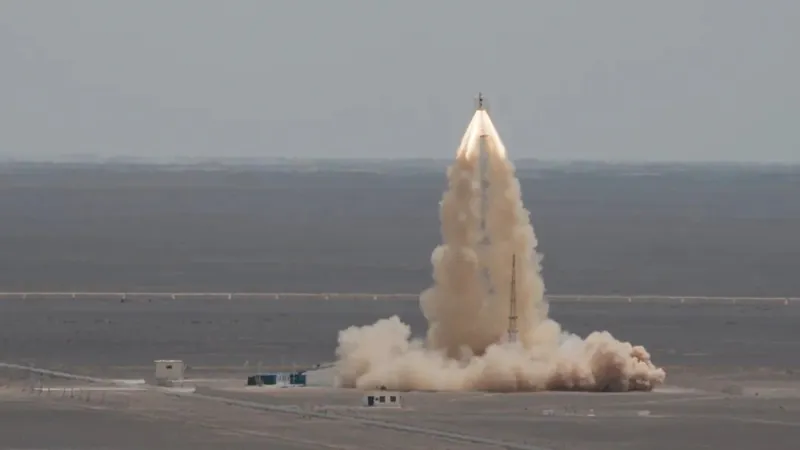
China's Breakthrough in Lunar Exploration: Next-Gen Astronaut Capsule Passes Key Test
2025-06-17
Author: Wai
In an impressive stride towards lunar dominance, China is set on a mission to eclipse NASA's efforts to return to the moon. The China Manned Space Engineering Office (CMSEO) recently celebrated a major milestone: the successful completion of a pad abort test for its cutting-edge Mengzhou spacecraft.
Conducted on June 17 at precisely 12:30 p.m. Beijing time, this pivotal test took place at the Jiuquan Satellite Launch Center in northwest China. The Mengzhou spacecraft, which was positioned on the pad without its rocket, successfully executed a zero-altitude escape maneuver. The solid rocket engines powered up for a thrilling 20 seconds, propelling the spacecraft away from potential danger.
As the escape tower was jettisoned, three parachutes deployed, ensuring a gentle touchdown back on the desert floor just two minutes later. CMSEO hailed this critical test as "a complete success," marking a significant leap toward sending Chinese astronauts, known as taikonauts, to the lunar surface for the very first time.
This test exemplifies how spacecraft engineers can rigorously evaluate safety systems without risking the lives of astronauts. Mengzhou's escape tower is meticulously designed to swiftly detach the capsule from its rocket in case of an onboard emergency, effectively safeguarding the crew from disaster.
History shows that this life-saving capability has been a standard feature in crewed spacecraft since the dawn of space exploration. NASA's Orion spacecraft, integral to America's Artemis program aimed at returning astronauts to the moon, experienced a similar safety test back in 2019.
However, as China strides forward, its momentum appears robust, especially amid recent uncertainties surrounding NASA's lunar aspirations. A proposed 2026 budget from the White House raises doubts about the future of Artemis, hinting at potential cancellations of key projects like the Orion spacecraft and the Space Launch System (SLS) rocket after the planned Artemis 3 lunar mission in 2027.
With NASA facing budgetary hurdles, the stage is set for China to potentially accelerate its lunar ambitions and make history as the next nation to land humans on the moon.


 Brasil (PT)
Brasil (PT)
 Canada (EN)
Canada (EN)
 Chile (ES)
Chile (ES)
 Česko (CS)
Česko (CS)
 대한민국 (KO)
대한민국 (KO)
 España (ES)
España (ES)
 France (FR)
France (FR)
 Hong Kong (EN)
Hong Kong (EN)
 Italia (IT)
Italia (IT)
 日本 (JA)
日本 (JA)
 Magyarország (HU)
Magyarország (HU)
 Norge (NO)
Norge (NO)
 Polska (PL)
Polska (PL)
 Schweiz (DE)
Schweiz (DE)
 Singapore (EN)
Singapore (EN)
 Sverige (SV)
Sverige (SV)
 Suomi (FI)
Suomi (FI)
 Türkiye (TR)
Türkiye (TR)
 الإمارات العربية المتحدة (AR)
الإمارات العربية المتحدة (AR)